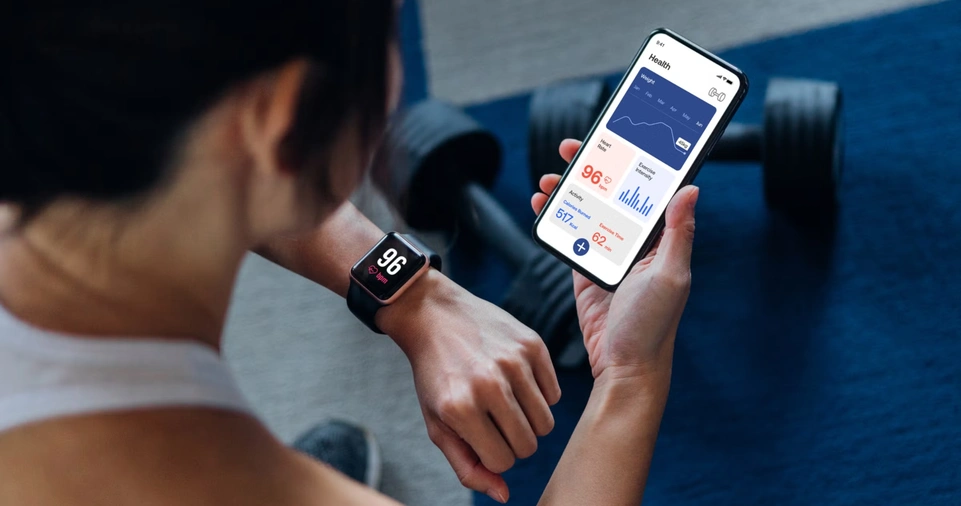In today’s fast-paced world, fitness enthusiasts and health-conscious individuals are increasingly relying on wearable technology to monitor and achieve their fitness goals.
Wearable devices such as smartwatches, fitness trackers, and heart rate monitors provide valuable data that help users track their progress, maintain consistency, and optimize workouts.
With continuous advancements in technology, wearable fitness devices are now equipped with artificial intelligence, biometric sensors, and data-driven analytics that help users get a more detailed picture of their health and performance.
This article explores how to effectively use wearable tech to set and achieve fitness goals, the benefits of these devices, and the best practices for maximizing their potential.
The Role of Wearable Tech in Fitness Tracking
Wearable technology plays a crucial role in fitness tracking by offering real-time insights into various health metrics.
These devices leverage sensors, artificial intelligence, and data analytics to provide users with a comprehensive view of their physical activity.
The convenience of having a health monitor on your wrist makes it easier than ever to stay on track with fitness goals.
Key Features of Wearable Fitness Tech
- Step Counting – Tracks daily steps to encourage movement and promote an active lifestyle.
- Heart Rate Monitoring – Provides insights into cardiovascular health and helps in optimizing workout intensity.
- Calorie Tracking – Estimates energy expenditure during workouts and daily activities.
- Sleep Tracking – Analyzes sleep quality, duration, and patterns to improve rest and recovery.
- GPS Tracking – Measures distance and pace for outdoor activities such as running, cycling, and hiking.
- Activity Recognition – Detects different types of exercises automatically to keep workout logs accurate.
- Hydration & Nutrition Tracking – Helps maintain a balanced diet by monitoring water intake and calorie consumption.
- Blood Oxygen and ECG Monitoring – Assesses oxygen saturation and heart rhythm for early health warnings.
- Recovery & Stress Tracking – Uses HRV (Heart Rate Variability) and sleep data to determine recovery status and stress levels.
Setting SMART Fitness Goals with Wearable Tech

Using wearable devices effectively requires setting SMART (Specific, Measurable, Achievable, Relevant, and Time-bound) fitness goals.
The ability to track progress in real time allows for better goal setting and ensures that users stay motivated to reach their targets.
Examples of SMART Fitness Goals:
| Goal Type | Example |
|---|---|
| Weight Loss | Lose 10 lbs in 3 months by burning 500 extra calories daily. |
| Strength Training | Increase bench press weight by 20% in 6 weeks. |
| Cardio Endurance | Run a 10K in under 50 minutes within 8 weeks. |
| Sleep Improvement | Improve sleep efficiency to 85% within 2 months. |
| Daily Activity | Walk 10,000 steps per day consistently for 30 days. |
| Stress Reduction | Lower average daily stress levels by 10% in 2 months using guided breathing exercises. |
| Hydration | Increase daily water intake to 3 liters per day within 1 month. |
Best Wearable Tech Devices for Fitness Tracking
There are numerous wearable fitness devices available, each catering to different needs. Below are some of the best options based on features, battery life, and pricing.
Comparison of Popular Wearable Fitness Devices
| Device | Key Features | Battery Life | Price Range |
|---|---|---|---|
| Fitbit Charge 5 | Heart rate, GPS, sleep tracking, stress tracking | Up to 7 days | $149 – $179 |
| Apple Watch Series 9 | ECG, blood oxygen, fitness tracking, AI coaching | Up to 18 hours | $399+ |
| Garmin Forerunner 255 | Advanced GPS, VO2 max, performance tracking, hydration monitoring | Up to 14 days | $349 – $399 |
| WHOOP 4.0 | Continuous strain, recovery tracking, no screen, HRV tracking | 4-5 days | Subscription-based |
| Samsung Galaxy Watch 6 | Sleep coaching, body composition, fitness tracking, stress management | Up to 40 hours | $299+ |
| Oura Ring | Advanced sleep tracking, HRV, recovery insights, no screen | 4-7 days | $299+ |
Maximizing Your Wearable Tech Experience

Customize Your Goals & Metrics
- Set personal fitness goals in your device’s app.
- Enable notifications for reminders and goal milestones.
- Adjust sensitivity settings to ensure accurate tracking.
Analyze Your Data Regularly
- Review weekly and monthly performance reports.
- Identify trends and adjust your workout plans accordingly.
- Pay attention to heart rate zones and optimize training.
Sync with Other Health Apps
- Connect with MyFitnessPal, Strava, or Apple Health for better tracking.
- Integrate with smart scales, hydration monitors, and smart gym equipment.
- Use AI-driven insights for deeper analytics and health recommendations.
Use Wearable Tech for Motivation & Accountability
- Join virtual challenges and fitness communities.
- Set up social sharing features to encourage friendly competition.
- Enable gamification features, such as badges and streaks, to stay motivated.
Monitor Recovery & Sleep
- Pay attention to rest days based on recovery scores.
- Improve sleep habits with sleep cycle analysis.
- Use guided breathing and mindfulness exercises to enhance recovery.
Understand Biometric Data
- Learn how heart rate variability (HRV) impacts training and recovery.
- Track blood oxygen levels for overall wellness.
- Monitor skin temperature variations for potential health insights.
The Future of Wearable Fitness Technology
Wearable technology is evolving rapidly, and future advancements are expected to bring even more precise and personalized health tracking. Some upcoming innovations include:
- AI-Powered Personalized Coaching – Real-time workout recommendations based on past performance and predictive analytics.
- Non-Invasive Blood Sugar Monitoring – Helping diabetic and prediabetic individuals track glucose levels without finger pricks.
- Advanced Stress Management Tools – Tracking cortisol levels, real-time emotional analytics, and guided mental health exercises.
- Improved Battery Life & Energy Harvesting – Devices powered by solar, kinetic, or body heat energy to reduce charging frequency.
- Biometric Authentication & Security – Enhancing device security with fingerprint, retinal, or voice recognition.
- Smart Clothing & Embedded Sensors – Wearables integrated into athletic gear for more seamless fitness tracking.
- Neurotech & Brainwave Monitoring – Potential applications in optimizing focus, relaxation, and cognitive performance for athletes.
ALSO READ: How to Set Up the Perfect Gaming Room on a Budget?
Conclusion
Wearable technology is a game-changer for anyone looking to track and achieve their fitness goals.
By selecting the right device, setting SMART goals, analyzing data, and staying motivated, users can leverage these tools for optimal results.
With advancements in AI, biometric sensors, and data analytics, the future of wearable fitness technology promises even more precise and personalized insights, ensuring a healthier and more informed lifestyle.







